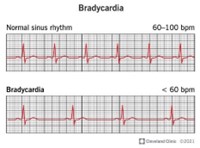A nurse is planning care for a group of clients. Which of the following clients should the nurse see first?
A client who has a spinal cord injury.
A client who is unconscious.
A client who has peripheral vascular disease.
A client who has a new ankle sprain.
None
None
The Correct Answer is B
Answer: B. A client who is unconscious.
A. A client who has a spinal cord injury.
While a spinal cord injury is serious and requires close monitoring, this condition does not immediately indicate that the client is unstable or at risk for life-threatening complications compared to an unconscious client. However, if there were signs of respiratory compromise or neurogenic shock, this client could be prioritized higher.
B. A client who is unconscious.
An unconscious client should be seen first because their condition may indicate a critical issue such as impaired airway, breathing, or circulation (ABC). Immediate assessment is needed to ensure the airway is clear, breathing is adequate, and circulation is stable, as these are life-threatening concerns.
C. A client who has peripheral vascular disease.
Clients with peripheral vascular disease (PVD) typically have chronic issues related to circulation in the limbs, which can cause pain and discomfort but are not usually immediately life-threatening. While important, this client is not the top priority compared to an unconscious client.
D. A client who has a new ankle sprain.
A new ankle sprain is painful and requires treatment, but it is not life-threatening. The nurse should address this client after ensuring the more urgent needs of other clients are met, such as the unconscious client who may require immediate interventions to preserve life.
Nursing Test Bank
Naxlex Comprehensive Predictor Exams
Related Questions
Correct Answer is C
Explanation
Answer: C. Place a surgical mask on the client when they leave their room.
Rationale:
A) Wear a surgical mask when within 0.6 m (2 ft) of the client.
While it is necessary to wear a surgical mask when in close proximity to a client on droplet precautions, the distance specified (0.6 m or 2 ft) is less than the standard recommended distance of 1 meter (3 feet). Therefore, this option is not fully aligned with best practices.
B) Move the client to a positive airflow room.
Positive airflow rooms are typically used for clients with immunosuppression or those who need protection from airborne pathogens, not for those on droplet precautions. This action is not appropriate for a client requiring droplet precautions.
C) Place a surgical mask on the client when they leave their room.
This action is appropriate and essential to minimize the risk of transmission of infectious agents to others when the client is moving outside their isolation area. The client wearing a mask is a key part of droplet precautions.
D) Remove fresh flowers from the client’s room.
While it may be necessary to remove fresh flowers in certain cases (such as for neutropenic clients), this is not specifically related to droplet precautions. Droplet precautions focus primarily on respiratory secretions and do not directly involve the presence of flowers.
Correct Answer is D
Explanation
Professional athletes often have a lower resting heart rate, known as bradycardia, due to their high level of physical fitness.

Whether you are a student looking to ace your exams or a practicing nurse seeking to enhance your expertise , our nursing education contents will empower you with the confidence and competence to make a difference in the lives of patients and become a respected leader in the healthcare field.
Visit Naxlex, invest in your future and unlock endless possibilities with our unparalleled nursing education contents today
Report Wrong Answer on the Current Question
Do you disagree with the answer? If yes, what is your expected answer? Explain.
Kindly be descriptive with the issue you are facing.
